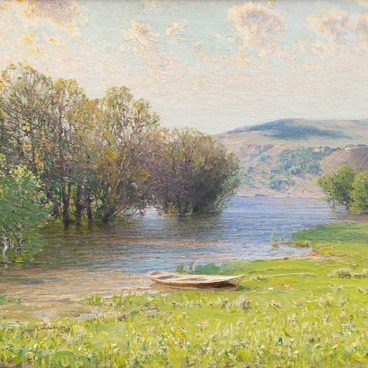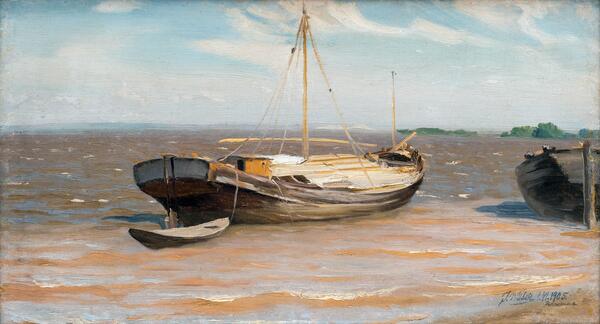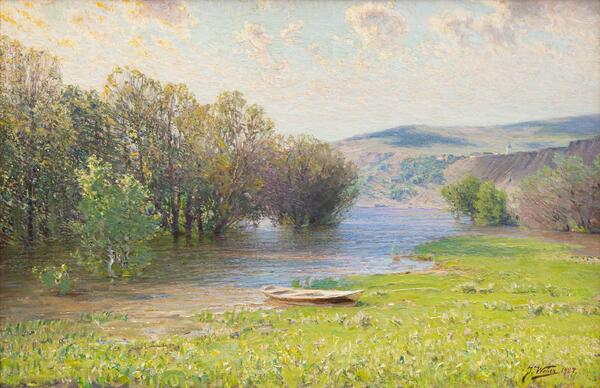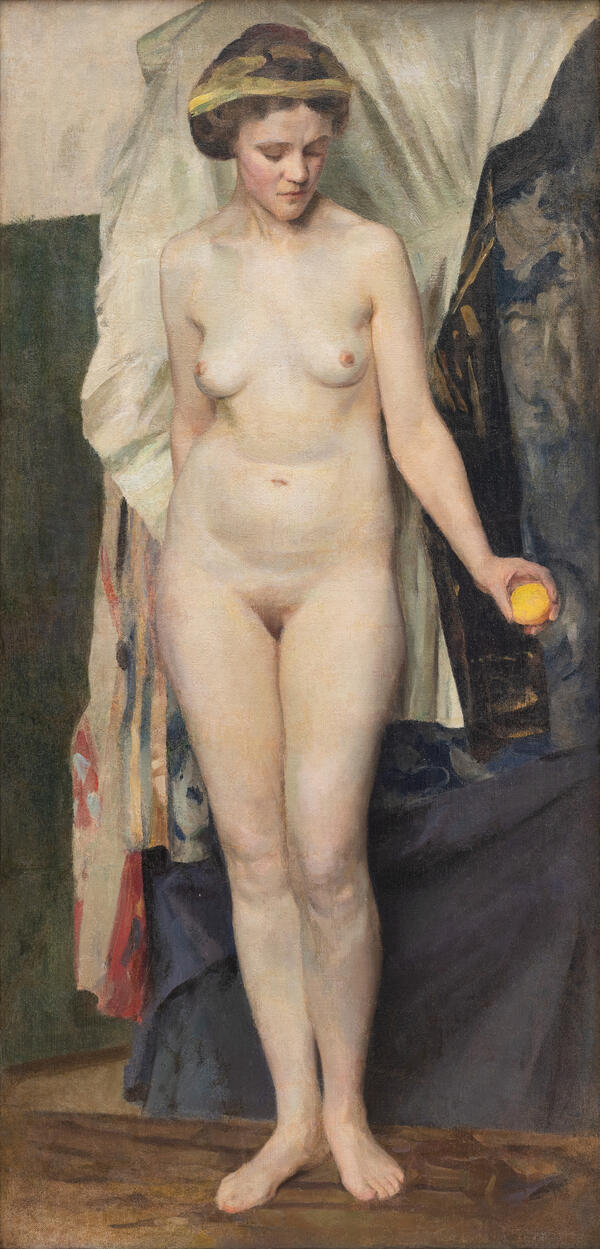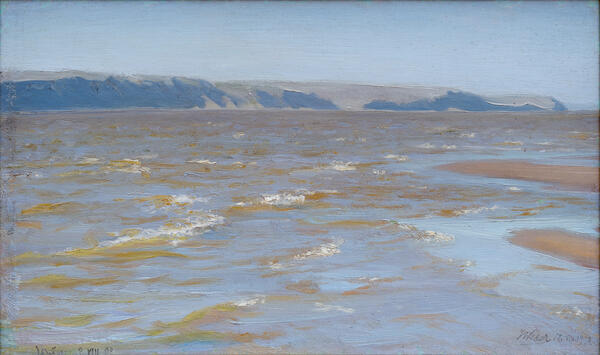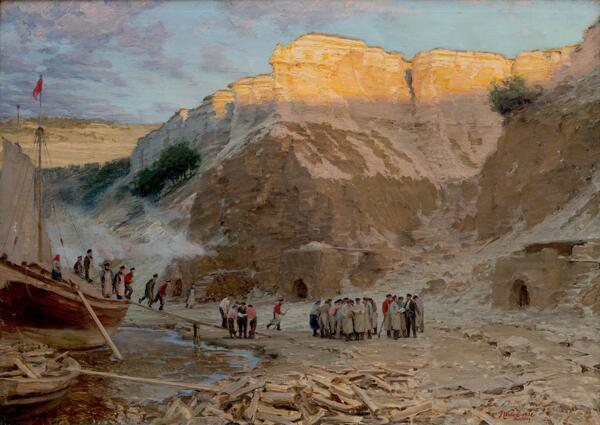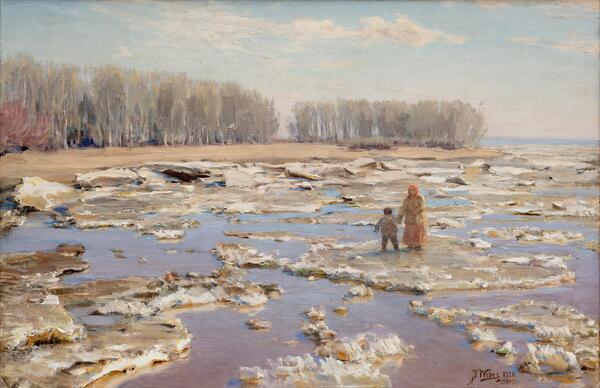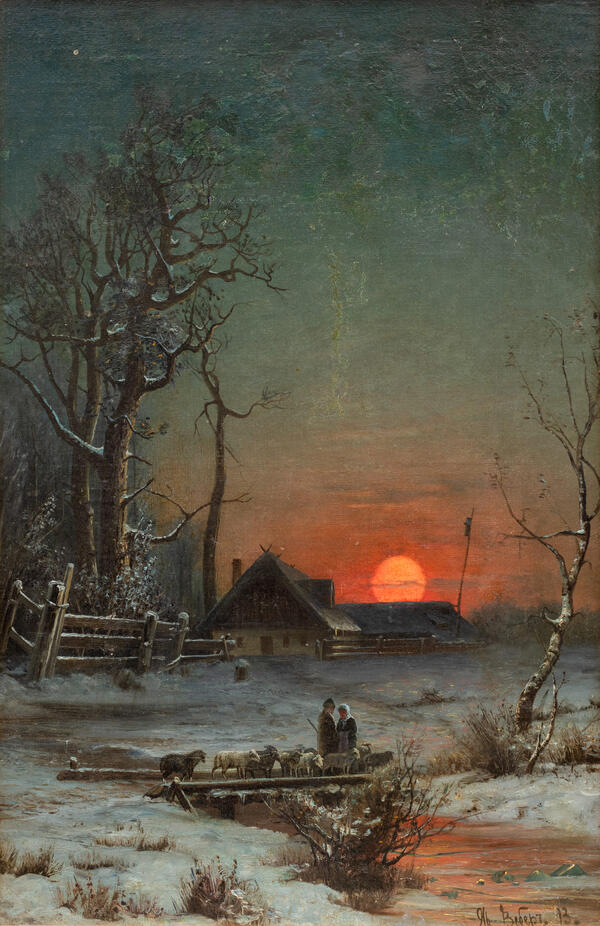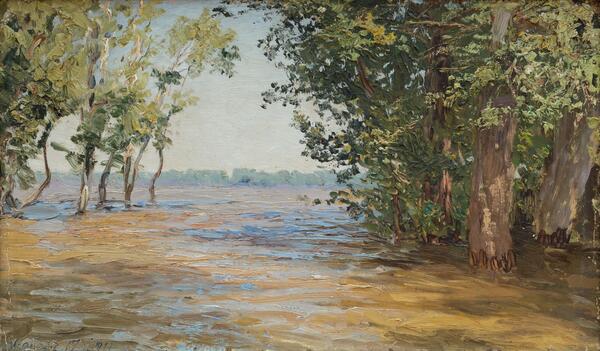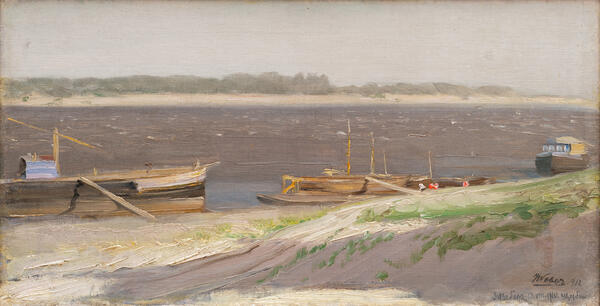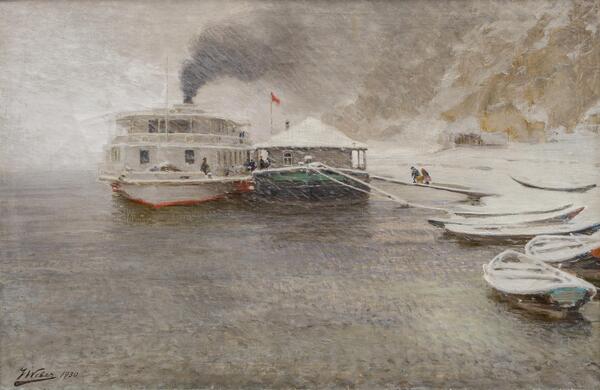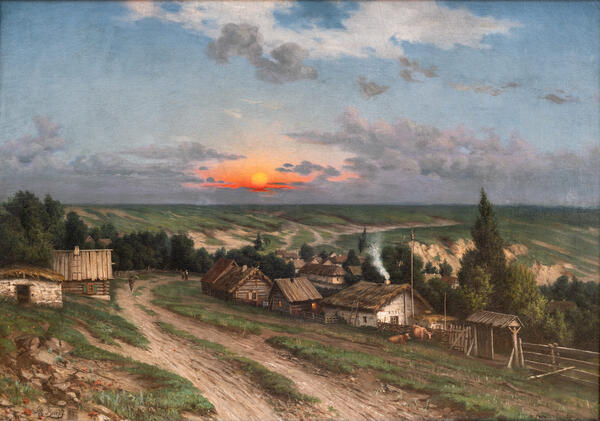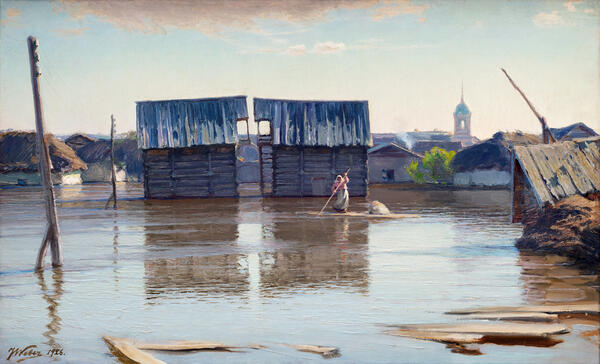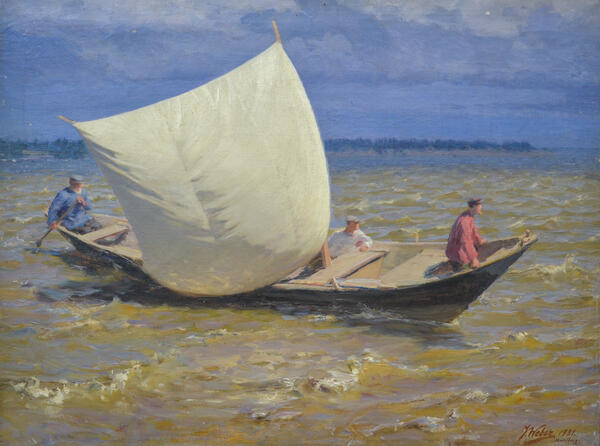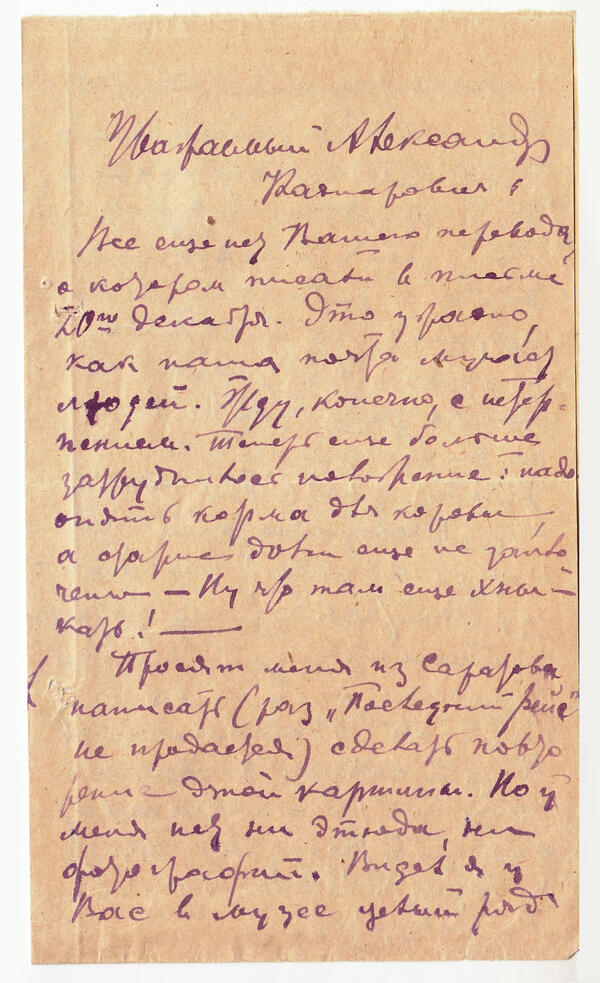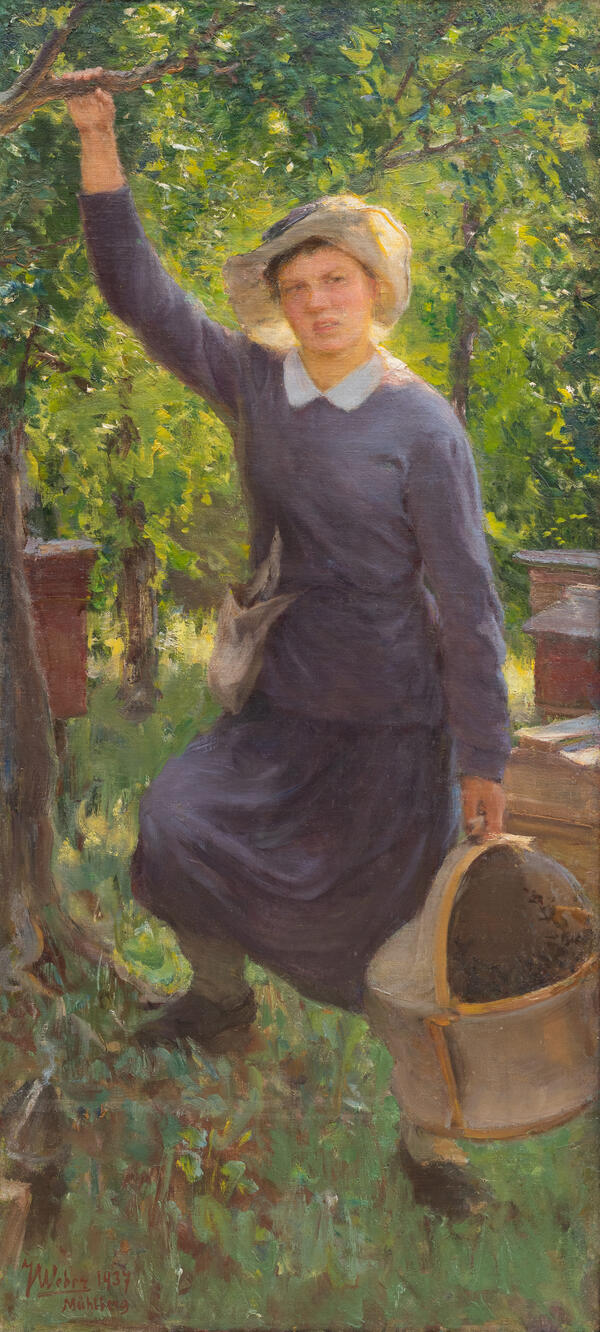The collection of the Engels Museum of Local Lore houses the last major work by Yakov Yakovlevich Weber, “Making Watermelon Honey”. The painting was commissioned by the Central Museum of the Volga German ASSR and presented at the German Republican Exhibition in 1937.
In German villages, sugar was hardly used at all, it was replaced by watermelon honey (“nordek”). Special brigades of women were in charge of making it, for which a stove under a canopy was built right outside, where watermelon juice was boiled in huge vats. There are no colorful clothes, bare arms or legs — all the women are in long skirts, closed jackets and aprons. They are German peasant women, strict and virtuous. They will not sing ditties while working, but they will recite a prayer. Static is the figure of a female supervisor, who reprimands a woman for spilling honey. She stops guiltily in front of her, while others watch them attentively. The artist makes interesting use of daring angles of the figures and light contrasts, accurately conveying the textures of various objects and the heat from the fire in the oven. Weber created his work in Shcherbakovka (Mühlberg) and considered it unfinished, as “there is not a single person there painted from life”. However, there are few multifigure genre compositions among the works by Yakov Weber, which makes the painting “Making Watermelon Honey” all the more valuable.
In 1938, the 67-year-old artist was convicted as an
enemy of the people, subjected to repression and exiled to Kazakhstan. Yakov
Weber wrote in a letter to Kliment Voroshilov, a member of the Presidium of the
CPSU Central Committee, “… I declare that I am not guilty of anything in the
face of the Soviet state, I have never been a counter-revolutionary and I have
not had anti-Soviet views.” In 1941, the nationwide deportation of Germans
followed, and Weber was joined by his family. This marked the beginning of the
most tragic page in the life and work of a remarkable artist with a German
surname, who glorified Russian nature. Despite all the hardships of camp life,
Weber survived, and in 1956, justice triumphed — the artist was rehabilitated
and the title of Honored Artist was restored to him; he was assigned a personal
pension.

